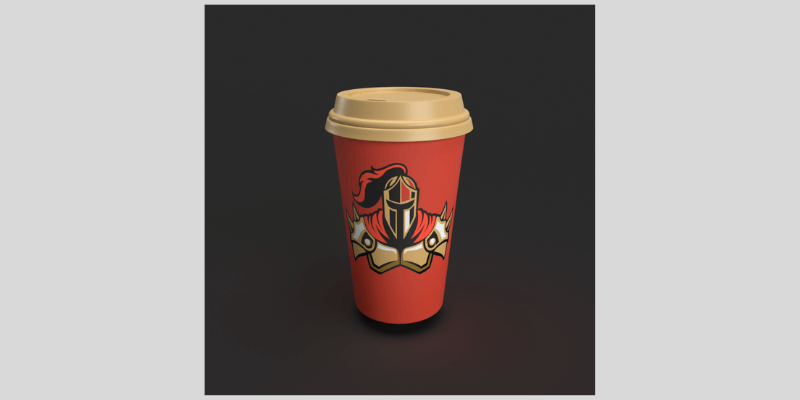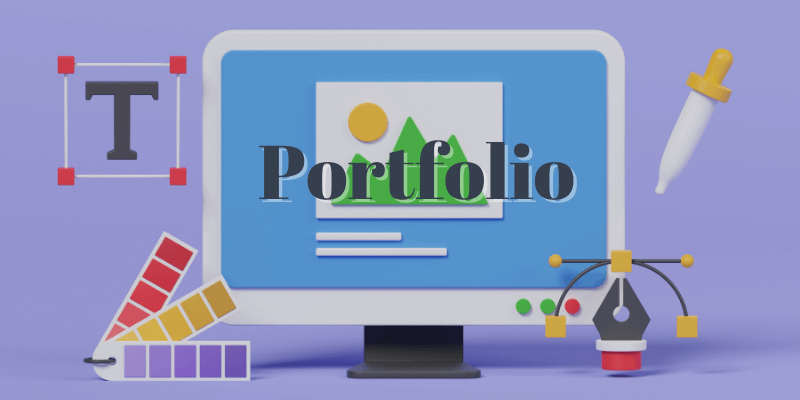Creating a graphic design portfolio is a must-have step in establishing yourself as a professional designer. Whether you’re just starting out in the industry or looking to make your current portfolio better for a better position, a well-crafted portfolio can help you stand out in a competitive industry and attract the attention of potential clients or employers.
Hi, I’m June! I’ve been working in the graphic design industry for over ten years. Based on my experience, your portfolio is definitely more important than your resume when applying for a graphic design position.
In this article, I’m going to show you some of the most important things to include in a graphic design portfolio and some tips on making your portfolio more appealing.
Table of Contents
5 Things You Should Know When Making a Graphic Design Portfolio
Your portfolio is a great way to showcase your creative skills and unique style, so if you want to find your ideal job, you must try your best to create one that best represents your work. Here are five things that can help you create a better portfolio.
1. Choose Quality Not Quantity
Some people think the more work they show, the higher chance they get hired because recruiters might find what they’re looking for. Well, that’s not the best thing to do. Remember, it’s better to include a few of your best works rather than a lot of your “normal” work.
Choosing quality work also includes choosing the “right” work to show on your portfolio. For example, if you’re applying for a web designer position, including a great packaging design project isn’t going to help as much as if you add a good web design project.
2. Be Original
Show your own ideas in your work instead of recreating something from others. Creating original artwork demonstrates your ability to think outside the box and approach design challenges in innovative ways which helps you stand out from the crowd.
Graphic design is a competitive industry, especially with all the AI tools available today, showing your unique point of view through your design is more important than ever before. Your distinctive and memorable portfolio can make all the difference in getting hired.
3. Keep it Sample
Using white space is a way to make your work stand out. You can add short text to explain the project a bit, but avoid a huge block of text on your portfolio, especially when you create the print portfolio.
I’ve seen portfolios that have fancy backgrounds, and that don’t look great. It can cause “steal” the attention from your actual artwork because the background elements and your work are “competing” with each other.
4. Make Yourself “Available”
In which sense? Imagine your portfolio is great but people can’t find you. That’s right, it’s very important to put your contact information on your portfolio!

Today, even social media can be your “portfolio” because you can show your work, and it’s easier for people to contact you. So besides your phone, and email, which are the essentials, I definitely recommend putting your (professional) social media account on your portfolio too.
5. Choose the Right Color/Theme
Color is important but too many colors can be a problem. When creating a portfolio, it’s a good idea to have enough white space to keep the focus on your work, not the “background”. So I would say that whether you’re creating a print or digital portfolio, keeping the background white is the best choice (most of the time).
What to Include in a Graphic Design Portfolio
Whether you’re applying for an entry-level or senior designer position, depending on the type of graphic design position you’re applying for, you should choose the “right” project to show on your portfolio.
For example, If you’re applying for a product/packing design position, the main projects on your portfolio should be related to packaging design.
If you’re not sure what’s your direction, some common projects to include in a graphic design are logo design, branding projects, web design, and packaging mockups.

Besides your artwork, you should also add your contact information, your work title (such as creative director, graphic designer, illustrator, etc) project names, and quick overviews on your portfolio.
Some people also add their work experience or resume to their portfolio. That’s fine if you’re sending a digital portfolio. But if you have a website, it’s better to include your experience on your About page.
What if you haven’t done any real-world projects? I do have a couple of tips and tricks for what to include in your portfolio as a newbie in the graphic design industry.
Graphic Designer Portfolio for Students/Entry-Level Jobs
When you’re just starting out, it’s understandable that you don’t have “experience” to show. So instead of showing your real-world work experience, you can put your school projects on your portfolio, and if you have done internships with real companies, that would be a plus.
Including some of your design process is also essential, because it shows your creativity or problem-solving skills, and these are some of the most important skills a graphic designer should have.
Here’s a trick. If there’s a company that you really want to work for, you can purpose an idea for how to solve their current problems or make their business better through design. For example, you can create an ad campaign, or show them a rebranding idea.
Graphic Designer Portfolio for Experienced Designers
If you already have some years of experience working as a graphic designer or have successful projects, you should include testimonials in your portfolio, but in a clean and simple way. Then, of course, the more famous the company you worked for, the better.
Then, of course, follow the tips above such as using the right color theme, adding your contact information, etc.
Wrapping Up
It’s important to showcase the type of projects that are related to the position you are applying for, add your contact information, and show your creativity skill on your graphic design portfolio.
Some of the details that can improve your portfolio are using the right color theme, paying attention to the layout, and making use of white space.
Hope this article helps you get a better idea of how to create a graphic design tutorial. What do you think it’s the most important thing to have in a good portfolio? Feel free to leave a comment below.
About June Escalada